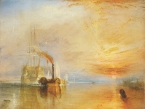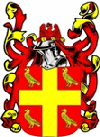treespider
Posts: 9796
Joined: 1/30/2005
From: Edgewater, MD
Status: offline

|
quote:
Scholl wrote:
Please note that virtually ALL the examples given are for JAPANESE shells striking Allied vessels. The Japanese Navy did not generally even issue an HE round to naval vessels or Naval guns in general..., the assumption being that they would be firing at naval (armored) targets in most cases. The use of AP rounds in virtually all instances led to a number of examples such as that described above, or the San Francisco at 1st Guadalcanal.
Even for the infamous "Bombardment of Henderson Field", a special run of 14" HE Incindiary rounds had to be produced and shipped to Rabaul. HE simply wasn't "standard issue" for Japanese Naval ordnance as it was in the US Navy. The doctrines, production, and planning were different.
Japan was a second-rate Industrial Power trying to impersonate a first-rate one, and corners had to be cut. Same problems led to the failure to implement the planned change-over of their standard infantry rifle even though they began the effort years before the war. You can only squeeze so much out of a narrow industrial base.
Sounds like the Japanese had a stock pile of HE at Iwo... Its always interesting reading accounts from those who were there.
quote:
LCI(G) 441
At 1050, lieutenant (j.g.) Forrest W. bell gave the command to open fire with his 20mm and 40mm guns. His landing craft was proceeding to a point one thousand yards off the right flank of blue Beach One. 'At 1103, we baegan firing range raockets. About a minute later, we took a direct hit in the galley, from a five inch shell, which exploded instantaneously. It did extensive damage to the galley, set fire to the starboard ready box, and woounded two gunners on the 20mm after battery. At 1106, we fired a salvo of approximately one hundred rockets, which landed on the beach near the waterline. Just after the rockets were firedand we were turning prepatory to retiring to extinguish the fire, we received another large shell in the clipping space on the starboard side at main deck level. We proceeded out of range at flank speed, pursuing a zig-zag course.
The crew extinguished the fire and determined that the craft did not have any underwater damage. Bell ordered the craft back into the fight...
At 1143 LCI(G) 441 was hit on the forecastle just aft of number one 40mm, which demolished the vent and did some minor hull damage. Bell received an order to withdraw. 'just as i gave the cammand'all engines ahead flank and ' left 20 degrees rudder', we were hit by a large explosive shell on the starboard side gun deck, just aft of the number three 40mm. It killed and wounded the gunners and disabled the electric steering engine room.' The uncontrolled craft swung in a large circle, but gradually closer and closer to the beach.
One of the UDT swimmers, on his way back to the pickup point, was almost hit by the out of control LCI... As it passed by, he could see 'that the bridge was on fire and they were trying to get casualties out of there.' Marine Frank Schnell was aboard as an observer. 'As I went to the conning tower, we received a direct hit on the forward gun tube. About fifteeen seconds later we received another direct hit just aft of the first one. The LCI then began to withdraw....'
Bell ordered 'rudder amidships', which was relayed to the steering room by messenger. 'When my command was finally executed, we came out of our swing and were headed directly for the beach at flank spped! I shouted 'Hard left rudder' which was passed immediately. We now headed away from the beach at somewhat reduced speed. We got about 1500 yards from the beach, two very near misses landed a few feet from our stern. they threw a considerable amount of shrapnel over our decks, but did no further damage. We proceeded out of range and received no further hits or near misses.'
quote:
LCI(G) 450
...LCI(G) 450 commanded by W.A> Brady passed destroyers CApp, Luetze, and Henley, and headed for Red beach One at eight knots... ...At 1050 she opened up with her guns and prepared to bombard the beach. 'We were all set to let go with our rockets," Gerge Kern wrote, 'but just before we did, all hell broke loose!... ... First we got an 8 inch shell in the bow, and then we got another one in the center of the ship - and a third in the bow again. Two large mortars hit our well deck and knocked all our rocket launchers off. finally we got another 8 inch shell amidships. That gave us four holes, all at least three feet across.'
Brady wrote,"At 1055, the ship was hit with two large-caliber projectiles on the starboard bow, opening a large hole five feet by one foot in diameter, two crewmen were wounded.' two minutes later another hit by a large projectile on the port bow started a fire in the forwrad compartment....
quote:
LCI(G) 466
Initially assigned as a reserve boat, the 466 was called away to replace the 473, which was dead in the water. At 1106, We advised the destroyers Capp and Leutze that we were going to pass between them,' Lt. James j. Horovitz wrote in his report. 'As soon as we passed them, the LCI(G) 474 was observed retiring to seaward in sinking condition. At about 1112, the order to commence fire was given. Eleven minutes later, about 1200 yards from the beach we suffered at least three direct 6- to 8- inch enemy hits. The port and starboard 40mm guns were hit simultaneously, resulting in an explosin and fire in the gun tubs and heavy casualties among the gun crews. The third enemy hit demolished the interior of the pilothouse cutting off all communications between the conning tower and other parts of the ship.'
Just my opinion...not saying that the invasion is accurate...but there does seem to be a misconception about the "sinkability" of gunboats to large caliber shells...
One question I have is - a PB is reported to have been hit 23 times....23 times by what?
And again i'm not saying that the routine is correct...just asking that we examine the reports more closely.
_____________________________
Here's a link to: Treespider's Grand Campaign of DBB "It is not the critic who counts, .... The credit belongs to the man who is actually in the arena..." T. Roosevelt, Paris, 1910 |
 Printable Version
Printable Version






 ) that soak up infinite numbers of heavy shells.
) that soak up infinite numbers of heavy shells.  ) against invasions in WITP? We knew that only a couple of cozen were CD gun shells against the ships and most of the other shells were guns, mortars, etc. fired on the beach against the invasion. The more shots fired, the more killed/disabled the invasion took on the beach.
) against invasions in WITP? We knew that only a couple of cozen were CD gun shells against the ships and most of the other shells were guns, mortars, etc. fired on the beach against the invasion. The more shots fired, the more killed/disabled the invasion took on the beach. 











 New Messages
New Messages No New Messages
No New Messages Hot Topic w/ New Messages
Hot Topic w/ New Messages Hot Topic w/o New Messages
Hot Topic w/o New Messages Locked w/ New Messages
Locked w/ New Messages Locked w/o New Messages
Locked w/o New Messages Post New Thread
Post New Thread